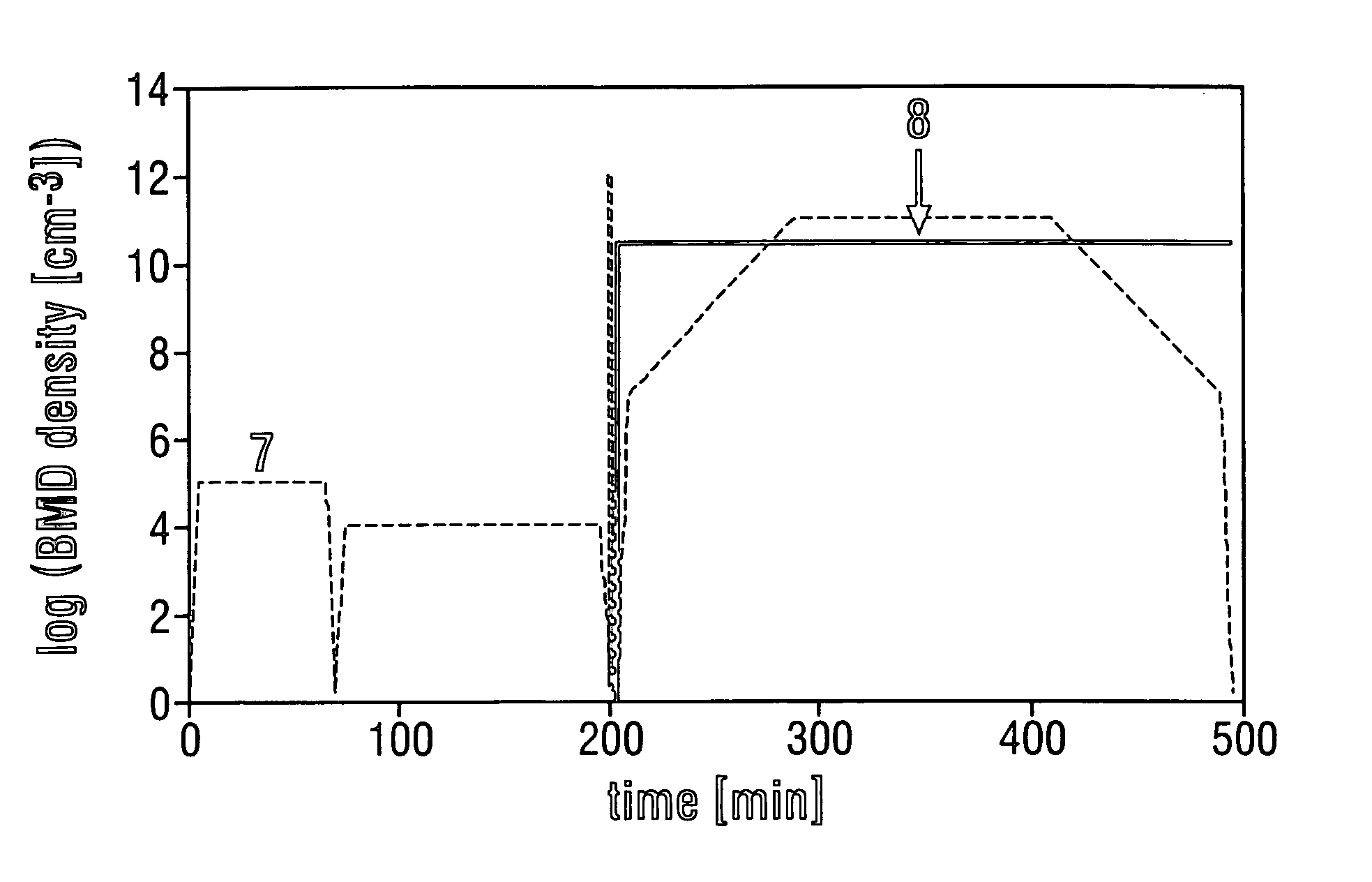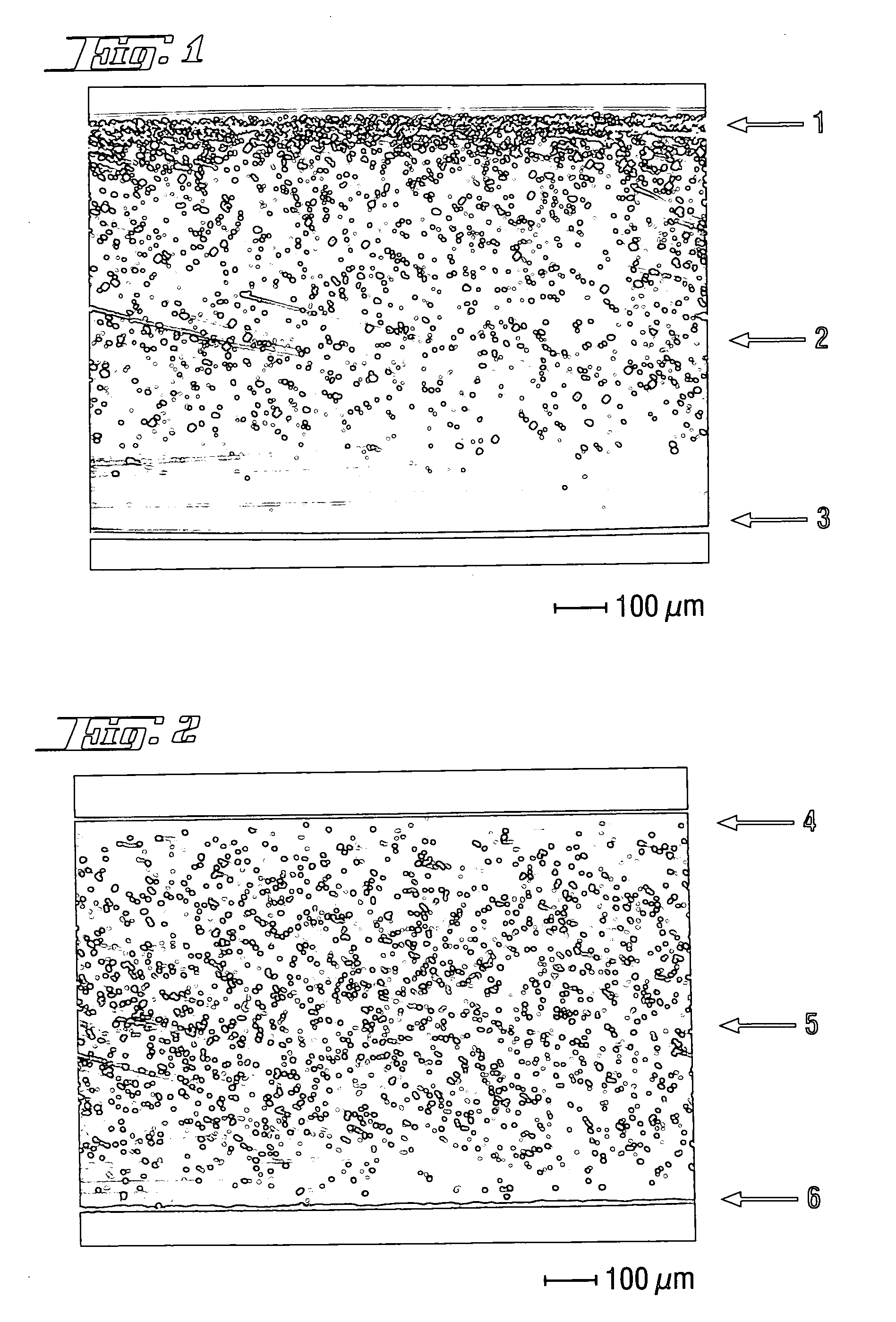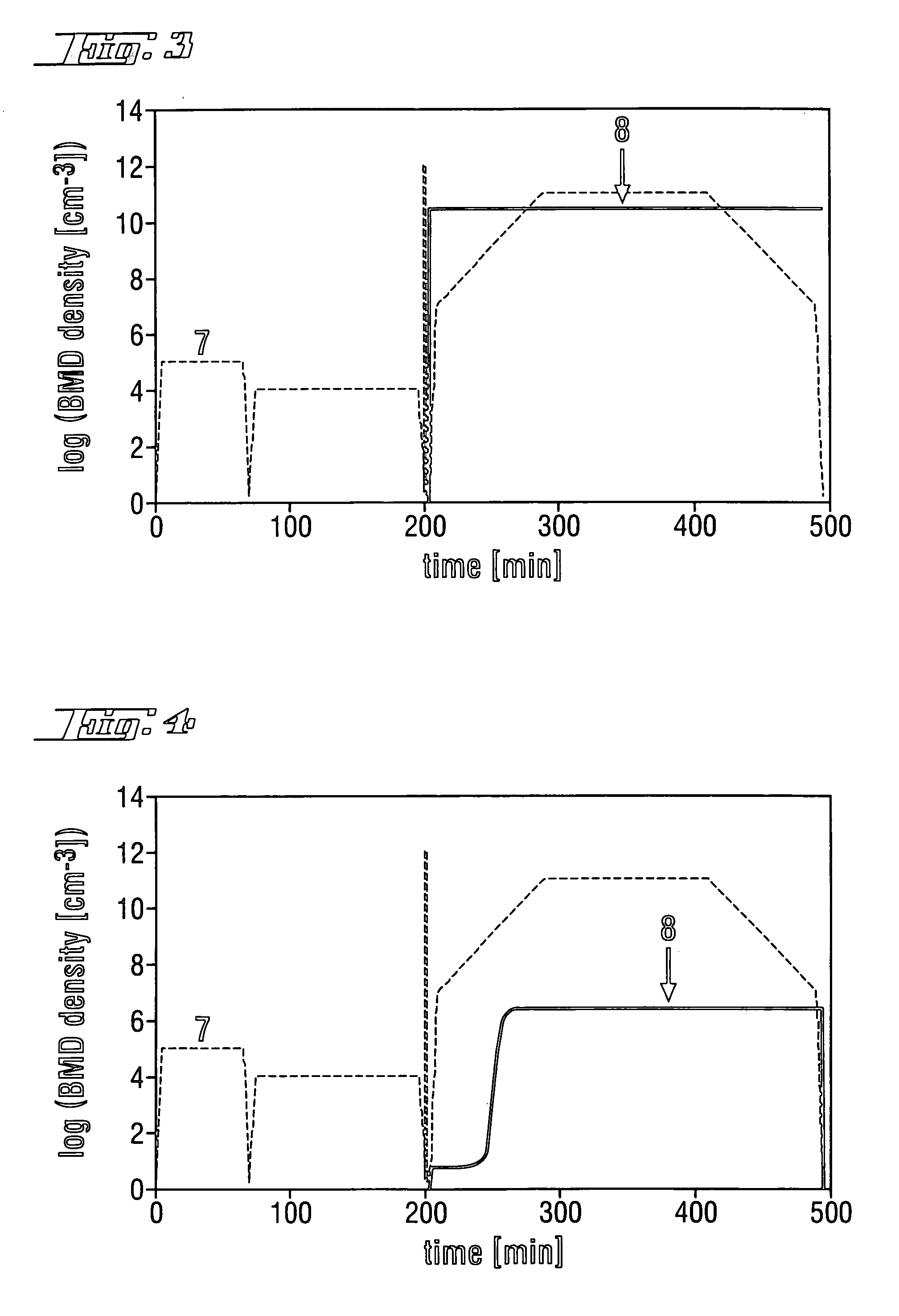Layered semiconductor wafer with low warp and bow, and process for producing it
- Summary
- Abstract
- Description
- Claims
- Application Information
AI Technical Summary
Benefits of technology
Problems solved by technology
Method used
Image
Examples
example 1a
[0042] The RTA treatment was carried out in a nitrogen atmosphere in accordance with the first process according to the invention. The RTA treatment was carried out in a single stage at a heating rate of 100° C. / s to 1,200° C. The SOI wafer was then held at this temperature for 10 s and then cooled to room temperature at a cooling rate of 15° C. / s.
example 1b
[0043] The RTA treatment was carried out in a nitrogen atmosphere in accordance with the first process according to the invention. The RTA treatment was carried out in a single stage at a heating rate of 100° C. / s to 1,200° C. The SOI wafer was then held at this temperature for 10 s and then cooled to room temperature at a cooling rate of 5° C. / s.
example 2a
[0044] The RTA treatment was carried out in two stages in a nitrogen atmosphere in accordance with the second process according to the invention. The RTA treatment was carried out at a heating rate of 100° C. / s to 1,200° C. The SOI wafer was then held at this temperature for 10 s and then cooled to 1,000° C. at a cooling rate of 100° C. / s. The SOI wafer was then held at 1,000° C. for 90 s before being cooled to room temperature at a cooling rate of 100° C. / s.
PUM
 Login to View More
Login to View More Abstract
Description
Claims
Application Information
 Login to View More
Login to View More - R&D
- Intellectual Property
- Life Sciences
- Materials
- Tech Scout
- Unparalleled Data Quality
- Higher Quality Content
- 60% Fewer Hallucinations
Browse by: Latest US Patents, China's latest patents, Technical Efficacy Thesaurus, Application Domain, Technology Topic, Popular Technical Reports.
© 2025 PatSnap. All rights reserved.Legal|Privacy policy|Modern Slavery Act Transparency Statement|Sitemap|About US| Contact US: help@patsnap.com



